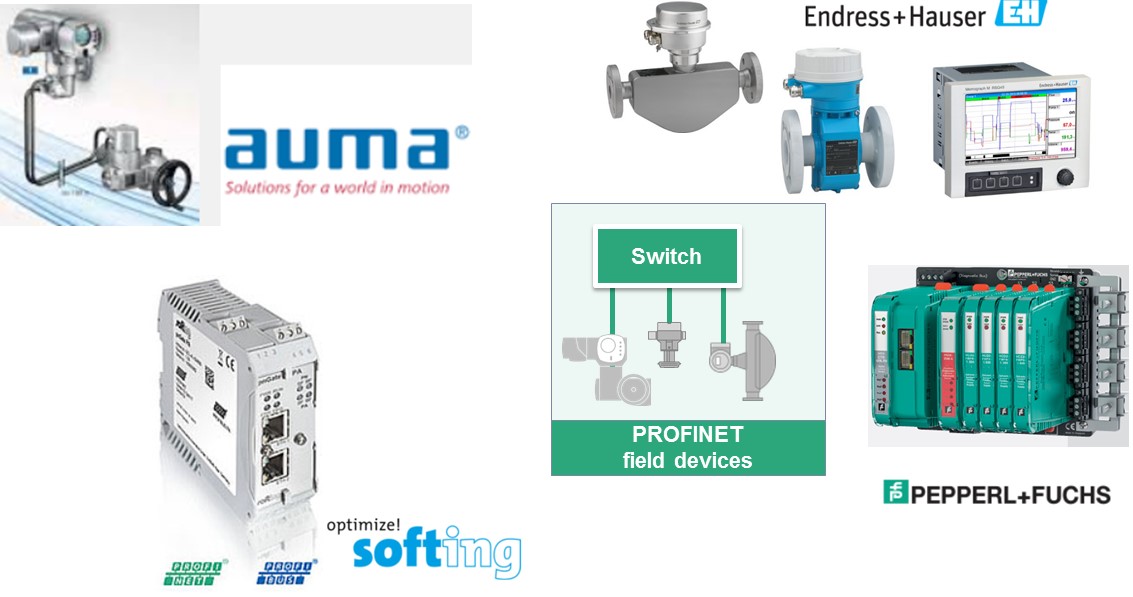Last year PROFIBUS and PROFINET International published a White Paper about the roadmap on how PROFINET will make its way into process automation plants in the future (“PROFINET – The Solution Platform for Process Automation.”
 The exciting fact is that today – exactly one year later – we can see that two of those roadmap ideas have already come to life:
The exciting fact is that today – exactly one year later – we can see that two of those roadmap ideas have already come to life:
- Field devices for process automation are available with PROFINET, e.g. actuators from Auma (AC .2 series), data recorders and flow meters from Endress+Hauser (Memograph RSG45, Proline 100). Furthermore Krohne and Emersons Mircomotion have announced their plans to release PROFINET devices in the future.
The availability of PROFINET field devices makes the technology very relevant for process plants in the food & beverage, life science or water & wastewater industries – to name a few. Industrial Ethernet enables faster device exchange procedures, quicker engineering and more flexible network topologies in those plants. - Proxies attach PROFIBUS PA segments directly to PROFINET. They are available from Softing (pnGate PA) and by Pepperl+Fuchs (PROFINET gateway for FieldConnex® Segment Coupler 3).
This fact dramatically increases the suitability of PROFINET for the process industries, but any plant requiring process automation for example in the chemical or mining business, where PROFIBUS PA has already been widely adopted.
Major automation vendors in the process industry agree on the fact, that PROFIBUS PA is the major ingredient for digital communication on the last mile in process automation because of its unique features: It provides ignition protection for hazardous areas, 2-wire communication and bus-powering in typical and easy-to-maintain process automation network topologies (trunk + spur). The fictional characters of the “PROFIBUS Dialogues” video series on PI’s YouTube channel explain the benefits of the technology in simple terms.
Having PROFINET to PROFIBUS PA proxies in conformance to the Proxy Specification is a key element in offering a seamless integration solution for end-users, who want their “2-wire” or hazardous area devices to be fully digitally available and accessible.
I am glad to see how equipment manufacturers now show the relevancy of PROFINET technology for process automation. I look forward to the next steps in future products and above all to customer projects accessing the benefits of Industrial Ethernet in the process industries, by using the new proxies and PROFINET devices. In the long run a new physical layer for Ethernet-based communication will bring Industrial Ethernet down to all field devices, straight to hazardous areas and FDI will improve integration and communication even more.
Chairman PI Process Automation Marketing Working Group
Components for the migration to PROFINET:


